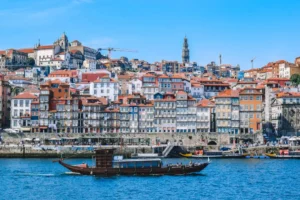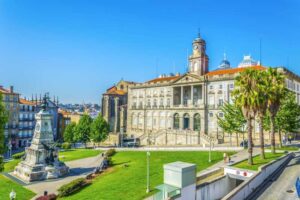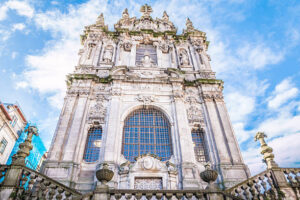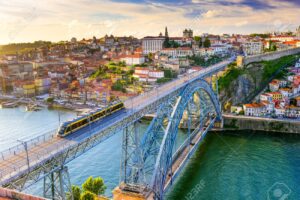Porto is Portugal’s second city, with the greater metropolitan area having a population of around 2.4 million. It sits in the north of the country on the estuary of the Douro River as it reaches the Atlantic Ocean. Its rich history dates back to Roman times, while visitors will also see evidence of Portugal’s “Age of Discovery” when its explorers sailed to far-flung places. Porto is the birthplace of Dom Henrique, Duke of Viseu, better known as Henry the Navigator, who was central in developing the Portuguese Empire in the early 15th century.
Porto’s historic centre was awarded UNESCO World Heritage status in 1996, and visitors will soon realise why as they begin to explore the city. This Portuguese city is becoming a popular tourist destination as there are plenty of things to do in Porto. But there is also the issue of crowds, and it’s worth avoiding the lines by planning your time and booking in advance. Porto’s latitude and the proximity to the sea mean that its winters are mild, though wet, and summers warm. There is never really a bad time to visit. Here is a list of the best things to do in Porto.
THINGS TO DO IN PORTO
1- CRUISE THE DOURO RIVER
The Douro River divides the city, so taking a cruise allows you to see the landmarks on either bank and travel under the bridges that link the two sides.
The south bank is where commercial activities take place; the warehouses storing important and exports.
The north bank holds the major landmarks of Porto, which sit high.
While Luis I Bridge may be the most famous of Porto’s bridges, the Maria Pia Bridge was built before it, a construction by Gustave Eiffel.
There are several cruising alternatives on the Douro, with sunset being a popular time for photographers. This is one of the most popular cruises. One way to save money is to buy a combined ticket that allows you access to the hop-on hop-off bus and a river cruise.

2- ADMIRE THE PALACIO DA BOLSA
The Palacio da Bolsa is the city’s old stock exchange near the Church of São Francisco.
It’s a neoclassical design with an amazing interior.
You will see sculptures, carvings, tiles and plasterwork, frescos and chandeliers.
Not surprisingly, it has been designated as a National Monument.
The oldest rooms in the Palacio are around 180 years old, with a guide able to give you plenty of information and answer your questions.
It is used for official receptions in northern Portugal and over the years, representatives of many countries worldwide have been honoured. Skip the line and book a guided tour of Palacio da Bolsa here.

3-SEE THE CLERIGOS CHURCH
There is a high tower, part of the church, visible from many parts of the city.
It is 76.5 m (250 feet) high and, at one time, was the tallest building in Portugal.
Clerigos is Baroque in style with plenty of intricate carvings.
The tower was the last part of the church to be built, completed in 1763.
Work began on the church in 1732 with completion, other than the tower, 18 years later.
There are 240 steps to the top of the tower, but the fabulous panoramic views make the effort well worth it.
The nearby building has exhibitions of 18th and 19th Century paintings, clothing and furniture.

4-PHOTOGRAPH THE LUIS I BRIDGE
Théophile Seyrig, the co-founder of the Eiffel Company, was the man who conceived this bridge that links the two banks of the Douro.
It dates back to 1886 with twin levels, rail above and traffic and pedestrians below.
At the time, it was the largest span bridge in the world and took the name of the Portuguese monarch.
You can get great views across the city at the bridge’s highest point, 60 m (197 feet), and you can cross by foot on both levels.
There’s also a cable car ride available for another set of great views.



